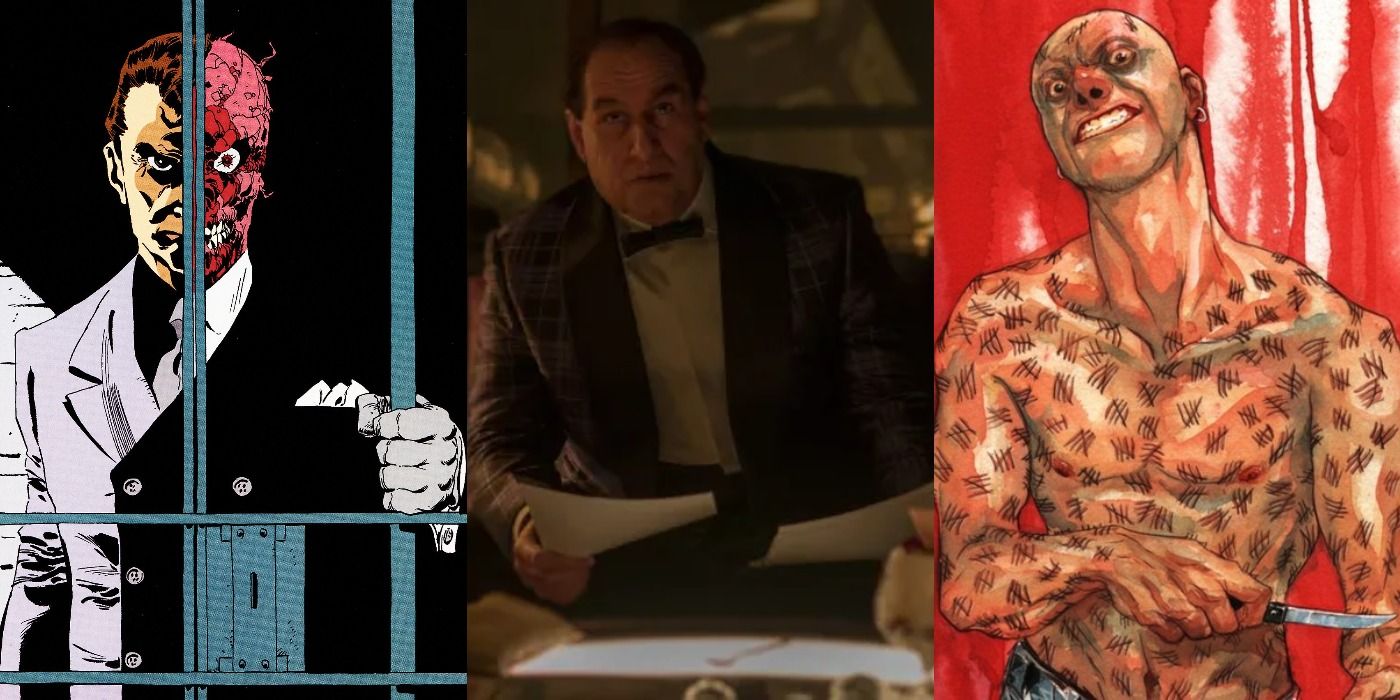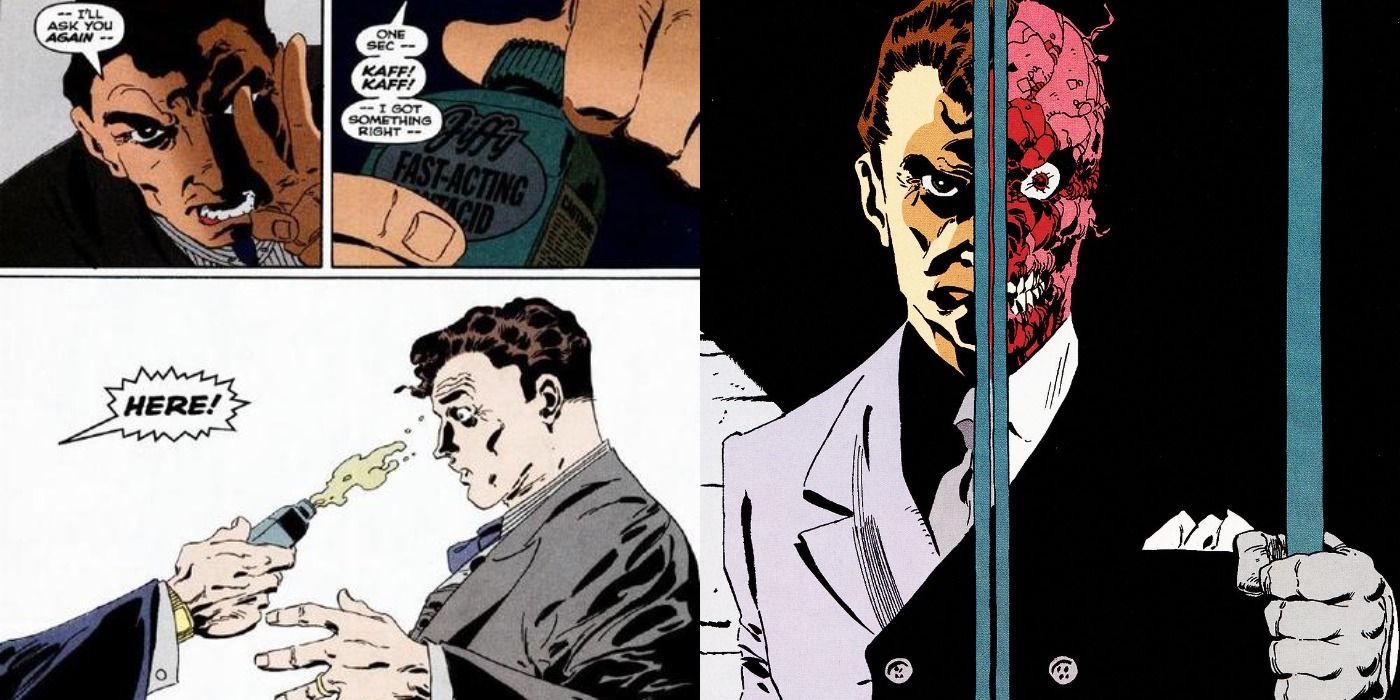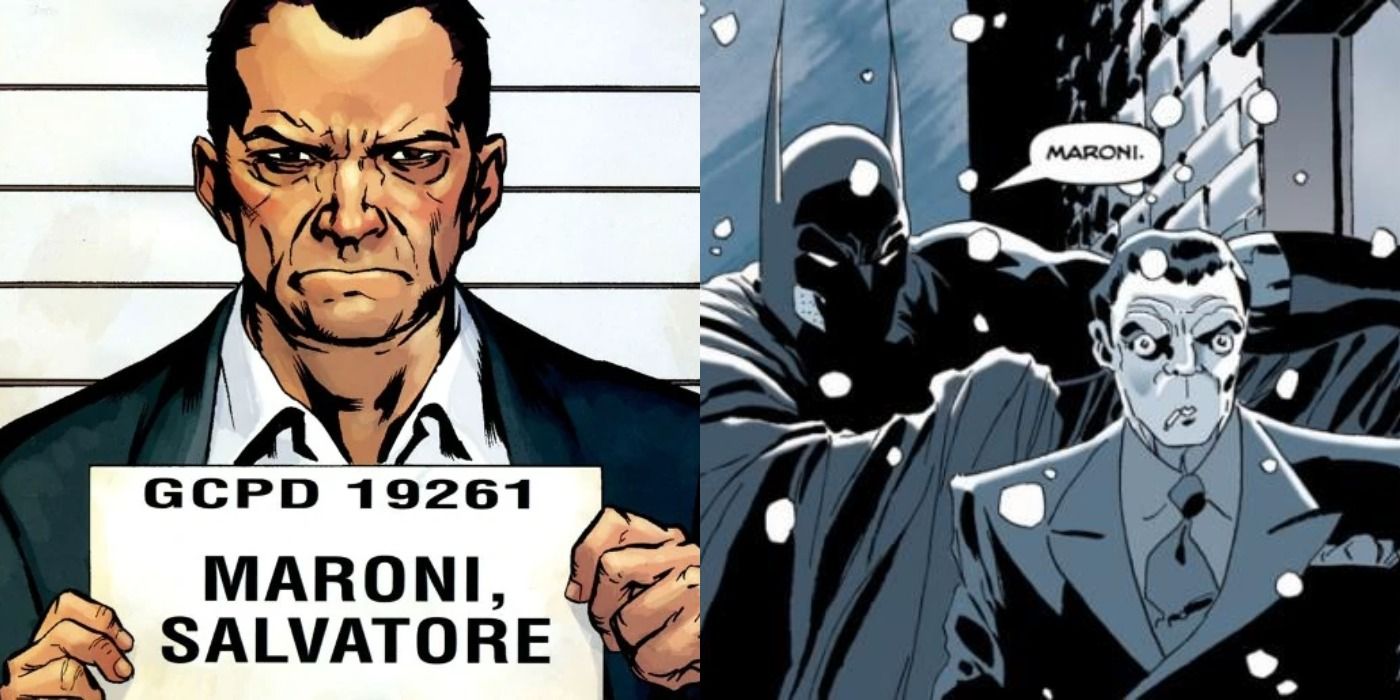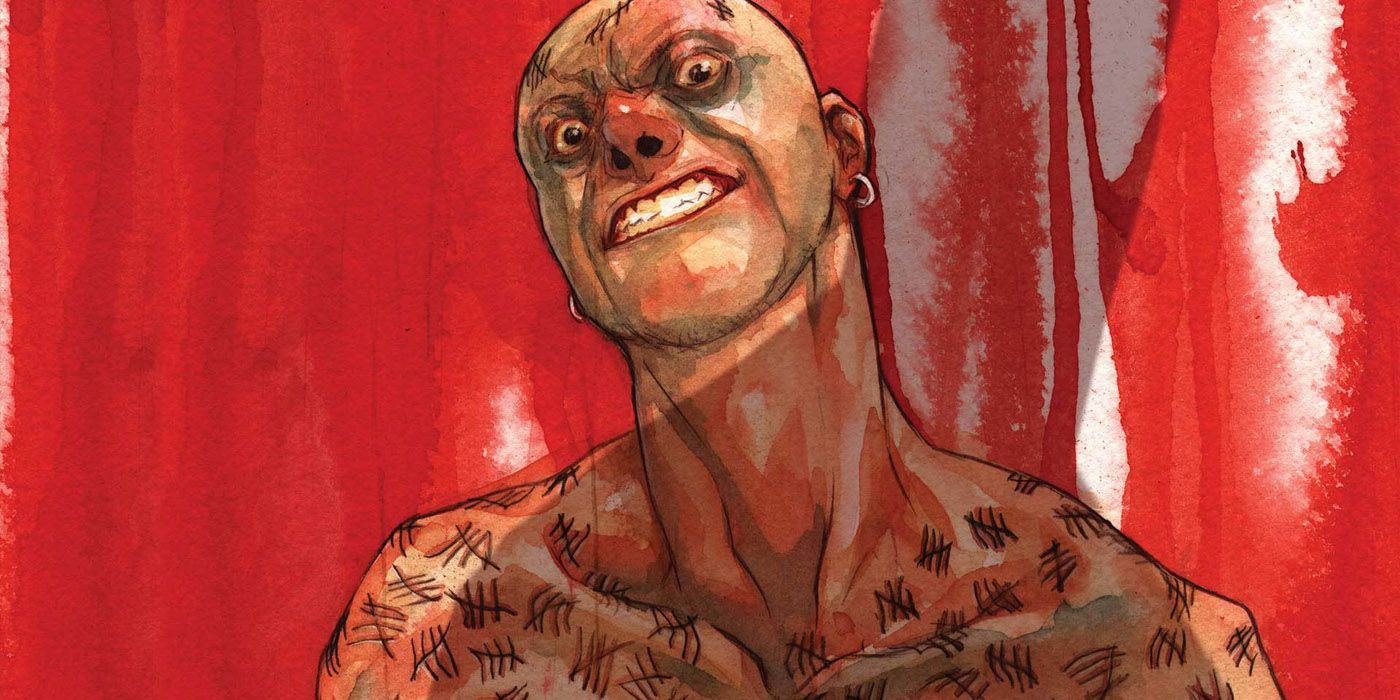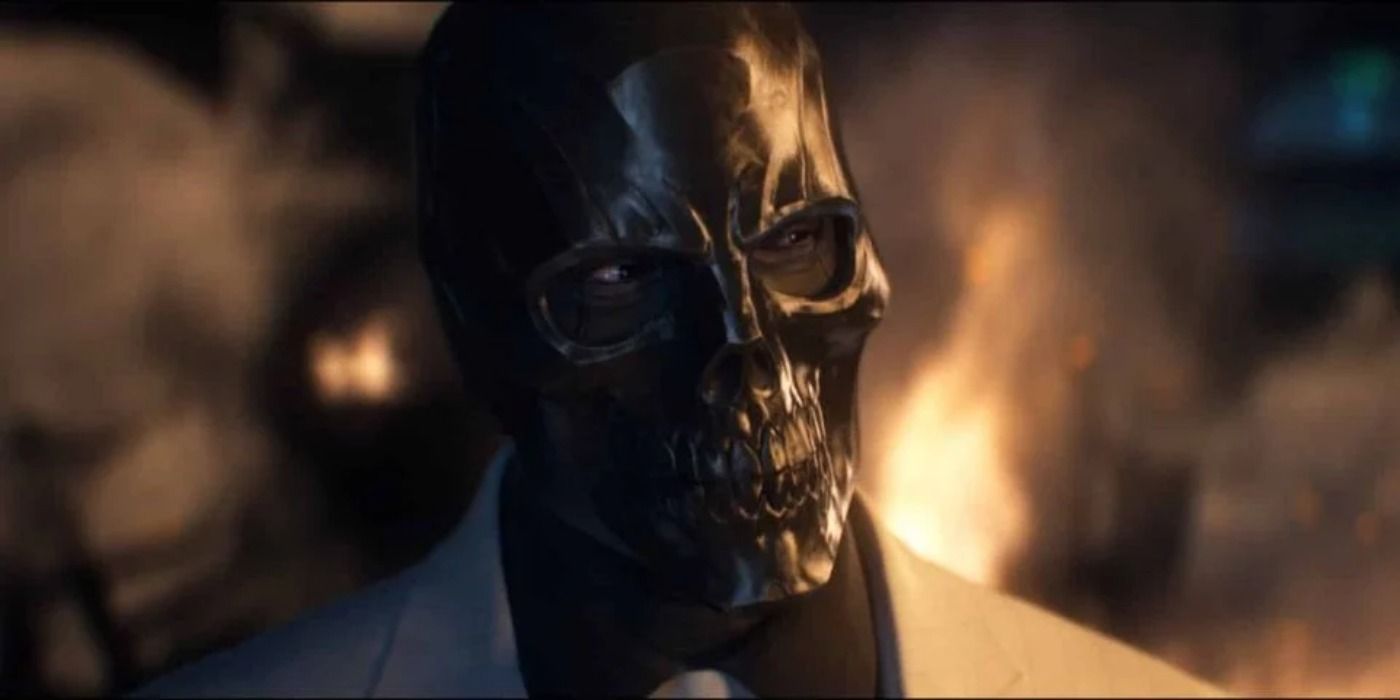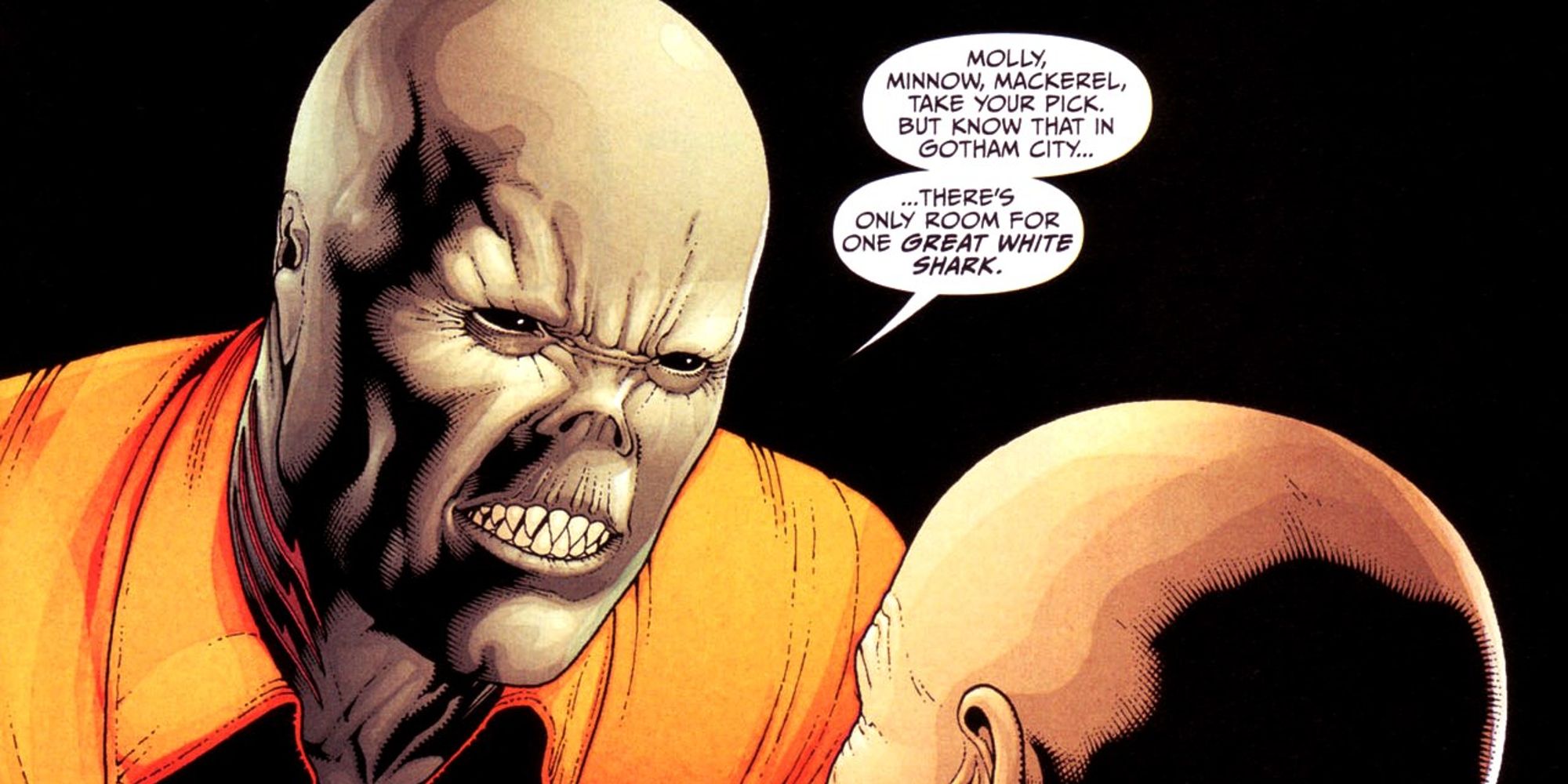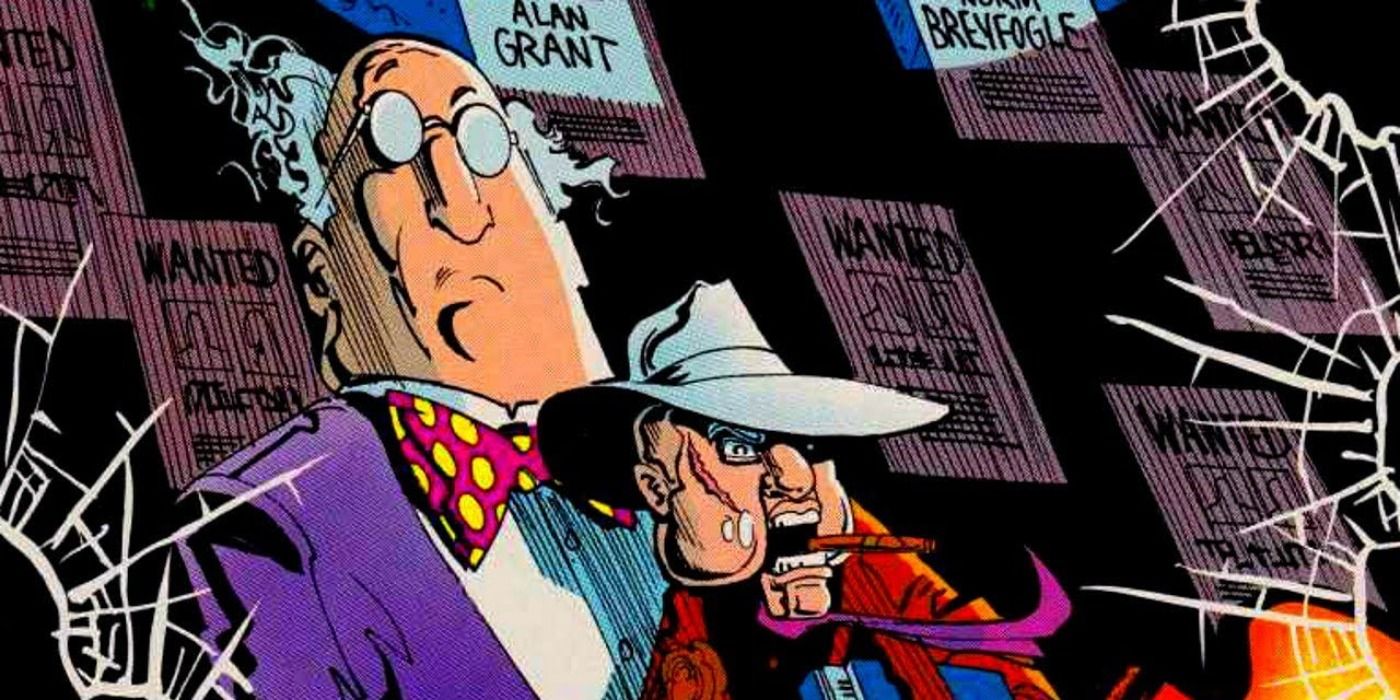The long-anticipated The Batman has finally hit theaters and quickly became a critical and commercial hit, with Matt Reeves' Gotham City and Robert Pattinson's take on the brooding hero expanding beyond the big screen. Per Deadline, Warner Bros. and HBO have formally greenlit The Penguin limited series for their HBO Max streaming service, with Colin Farrell returning to reprise his role as the Gentleman of Crime.
Farrell's transformative performance brought a great balance of conniving charm and a welcome dose of dark humor that's reminiscent of the actor's performances in movies like Martin McDonagh's Seven Psychopaths and In Bruges. And with a crime-drama show centered around him, it opens the door for some colorful Batman villains to make their first appearance in this universe. A possible origin for a new take on Two-Face could be justified, namely if showrunner Lauren LeFranc decides to dig up the history behind the Maroni crime family.
Harvey Dent/Two-Face
Aaron Eckhart's performance in Christopher Nolan's The Dark Knight as Harvey Dent/Two-Face was underrated, and the world that Matt Reeves is putting together in this budding Bat-verse feels at home for this character. Two-Face is one of Batman's greatest comic villains, and featuring in a supporting capacity in The Penguin could put together a new take on his origin story. In the famed The Long Halloween comic book by Jeph Loeb and Tim Sale, Harvey Dent is eventually scarred by acid thrown into his face by Salvatore Maroni in a botched trial.
In The Batman, an important part of Gotham City's lore is that the so-called historic Maroni drug bust was nothing but a farce so that Carmine "The Roman" Falcone could take a direct rival off the playing field. It would be exciting to see LeFranc play with this lore in The Penguin, and given the dire straits the city finds itself in, it shouldn't be impossible to work this storyline in.
Salvatore Maroni
Salvatore Maroni was one of the less "colorful" members of Batman's rogues' gallery, but that's not without reason. The aforementioned The Long Halloween is one of the most influential Batman comics, and it focused on the World's Greatest Detective's early years when organized crime was still the apex predator feeding off of Gotham City.
Maroni is presumably doing time in Blackgate Penitentiary well before the events of The Batman, but the city being under martial law in the Riddler's aftermath could justify a breakout. Ideally, this relatively small-time villain shouldn't play a huge role in The Penguin if he features at all, but the implications behind his effect on this universe's lore could be a stepping stone for a thrilling crime drama. Most notably -- and potentially -- would be setting up a Two-Face origin story just as Dent is taking up the role of district attorney in the wake of Gil Coleson's death.
Victor Zsasz
This villain featured twice in live-action theatrical adaptations, with the first being what's effectively a cameo in Nolan's Batman Begins. Victor Zsasz's second iteration was more expanded, played by Chris Messina in a role as Black Mask's right-hand man.
Whether he and/or Ewan McGregor somehow get to reprise their roles under different contexts -- since The Batman is on an alternate timeline from the mainline DCEU -- Zsasz's roles in Doug Moench, Bill Sienkiewicz, and Brian Stelfreeze's Batman Chronicles #3 and in a side mission in Rocksteady's Batman: Arkham City are a great foundation for another version. Zsasz eventually became a gambling addict who lost everything he had left to the Penguin at the Iceberg Lounge, turning into a mad serial killer. Similar to Birds of Prey, the villain could be written in as a hired assassin for a rival crime organization while taking the opportunity to exact revenge on Cobblepot.
Black Mask
Roman Sionis represented a form of evolution for what organized crime would look like in the "age of the freaks" post-Long Halloween/Dark Victory. It never fully went away, rather, it was more so taken over by said "freaks," including the likes of Two-Face and the Penguin. Sionis came from a wealthy, aggressively self-absorbed family that cared about their wealth and social standing more than their son.
Coupling this with being dropped on his head at birth by a doctor, Roman Sionis grew to be resentful of his phony parents and sadistic, eventually becoming the Black Mask crime lord. Ewan McGregor played him in a colorfully psychopathic way in Birds of Prey, but he seemed fairly underused. A more underrated Batman villain, he's notorious for his sadistic nature and extremely short temper, and would surely fit into a Gotham City filled with criminals vying to fill the power vacuum left by Carmine Falcone's murder.
Great White Shark
Warren White is among the most obscure rogues in the Batman mythos, and he's also been used as a collective punching bag for many of them. He first appeared in Dan Slott and Ryan Sook's Arkham Asylum: Living Hell, where he was established as a corrupt financier who'd been caught for white-collar crimes. In a desperate attempt to avoid the brutality of prison, he attempted to take his case to Gotham City and plead insanity, thinking that he'd be safer and get released sooner.
Of course, this backfires as the judge sentences him to Arkham Asylum, where he's horrifically scarred both mentally and physically by the likes of Killer Croc, Mr. Freeze, and more. His violent disfigurement eventually inspires him to don the Great White Shark identity as a mob boss. His origins would certainly feel more at home in the Arkham Asylum series (per Games Radar) in early development, but The Penguin could make him a player in the organized crime game.
Ventriloquist & Scarface
There have been multiple people to take on the Ventriloquist and Scarface personas, but the Arnold Wesker rendition made for one of the best villains in Batman: The Animated Series. What made him so compelling was that Wesker, in and of himself, wasn't a villain. He was merely a man suffering from extreme dissociative identity disorder that drew him to bring his Scarface dummy to "life." And the most satisfying aspect of his role in the DC Animated Universe was that Bruce Wayne/Batman helps close his character arc in a well-earned happy ending.
The potential is there for a fascinating adaptation of these characters into the context of a live-action gangster series, as Ventriloquist & Scarface could be the most unique Batman villains to appear onscreen in this format. Of course, a character dealing with such a complex mental illness would need to be written with care and attention to detail.

